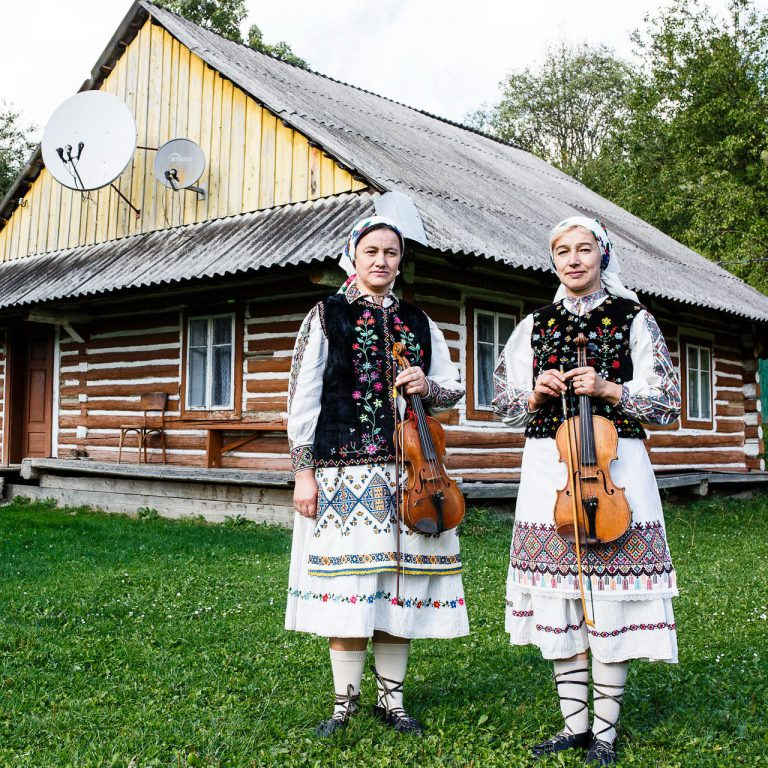Ukrainian ethnicity is comprised of a dozen ethnic groups, with their own language and lifestyle peculiarities. Their unique traditions have been shaping through centuries. However, as the cities and economy are developing, these traditions intertwine with each other and their differences gradually become less evident. The Ukrainian subethnic groups residing in the Ukrainian Carpathians and Zakarpattia are thought to be the ones who have managed to preserve their uniqueness. Boikos are one of the most numerous ethnographic groups residing in the mountains. Their lifestyle goes back centuries, encompassing a number of epochs and abundance of ideas, and constitutes a bulk of the general national heritage.
Boiko, also known as verkhovyntsi, pidhiriany, dolyniany, is a Ukrainian ethnographic group that inhabits the territory amid the Ukrainian Carpathians from the rivers Limnytsia and Teresva in the east to the rivers Uzh and Sian in the west, bordering such historic and ethnographic regions as Lemkivshchyna and Hutsulshchyna.
There are plenty theories as to the Boiko’s descent and scholars have not yet agreed on the most credible and valid explanation of their origin. According to the prevailing opinion, the ethnonym “boiko” derives from the Boii – a Celtic tribe that used to inhabit the area known today as Czech Republic and Austria. Another theory suggests that Boikos are the descendants of the White Croats tribe, who had a fair share in the ancestry of the Ukrainian nation about a thousand years ago. There was an attempt to trace the origin of this Carpathian sub-ethnic group from the Polish word “bojak” (an ox), Romanian “boi” (an ox), Russian “boikii” (brisk), invented word “voiko”, Ukrainian verb “boiatysia” (to fear) or “bohoiku”, which is a colloquial form of addressing God (“boh” is Ukrainian word for God). However, none of these suggestions has been recognized, as there is no valid evidence to support them.
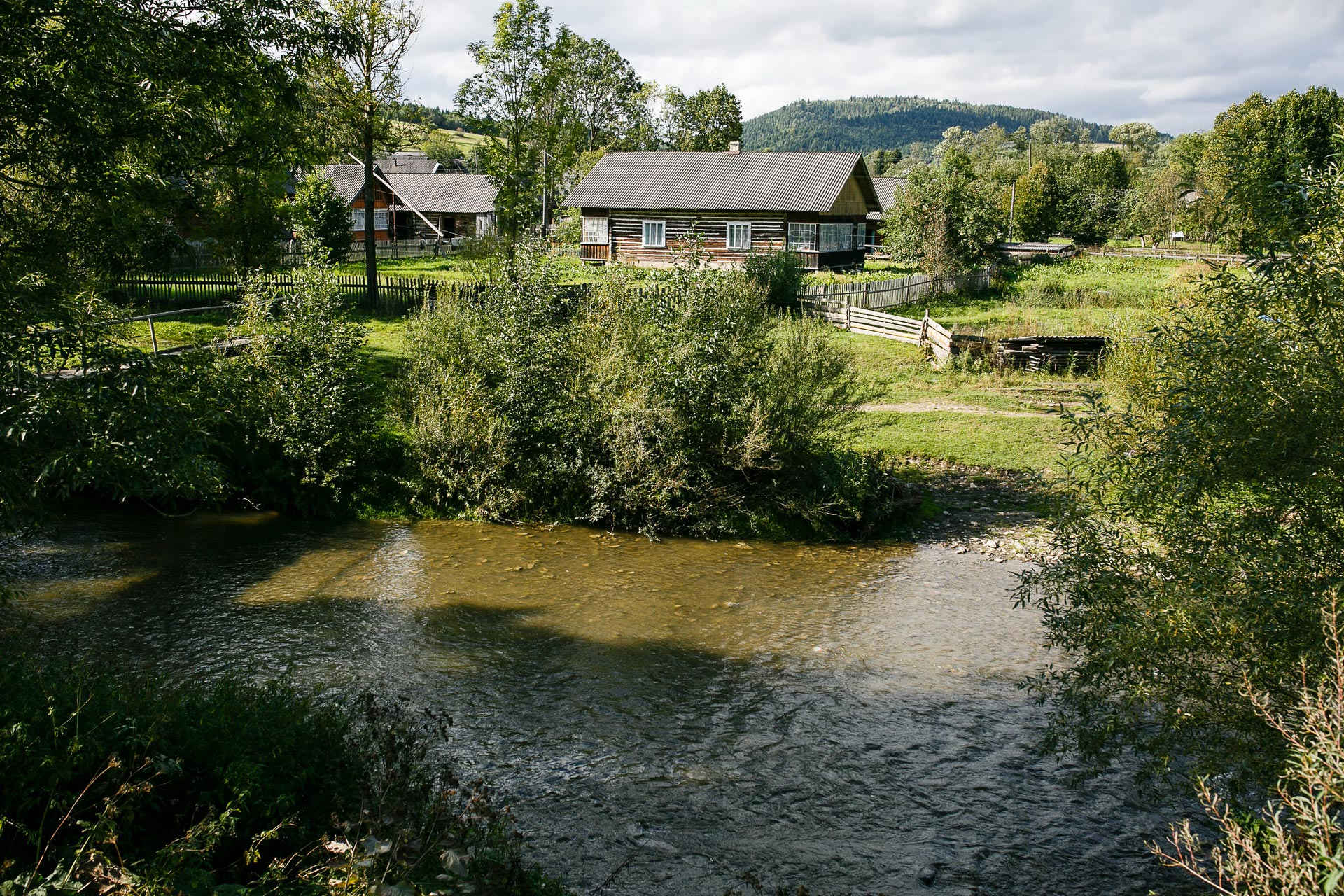
The villages of Boiko are scattered in the river valleys and tend to come in clusters. Plenty of settlements in these regions are of ancient origin, mentioned in the Chronicle of Halychyna and Volyn and other medieval references. The intellectual heritage of the Boiko has its own regional features. Local rituals and traditions are deeply associated with the everyday errands.
Another thing that has been drawing scholars’ attention is Boikos’ dialect, which belongs to the southwestern dialect of the Ukrainian language. It covers dialects of the northern Carpathian slopes, borders with the Lemkivshchyna dialect on the west and Hutsulshchyna dialect on the east. Boikos’ dialects are considered to be the most archaic, as they have preserved a range of features typical of the ancient Ukrainian and Proto-Slavic languages. It has its own phonetic, grammar and lexical features that are still prevalent in the communication of the local residents.
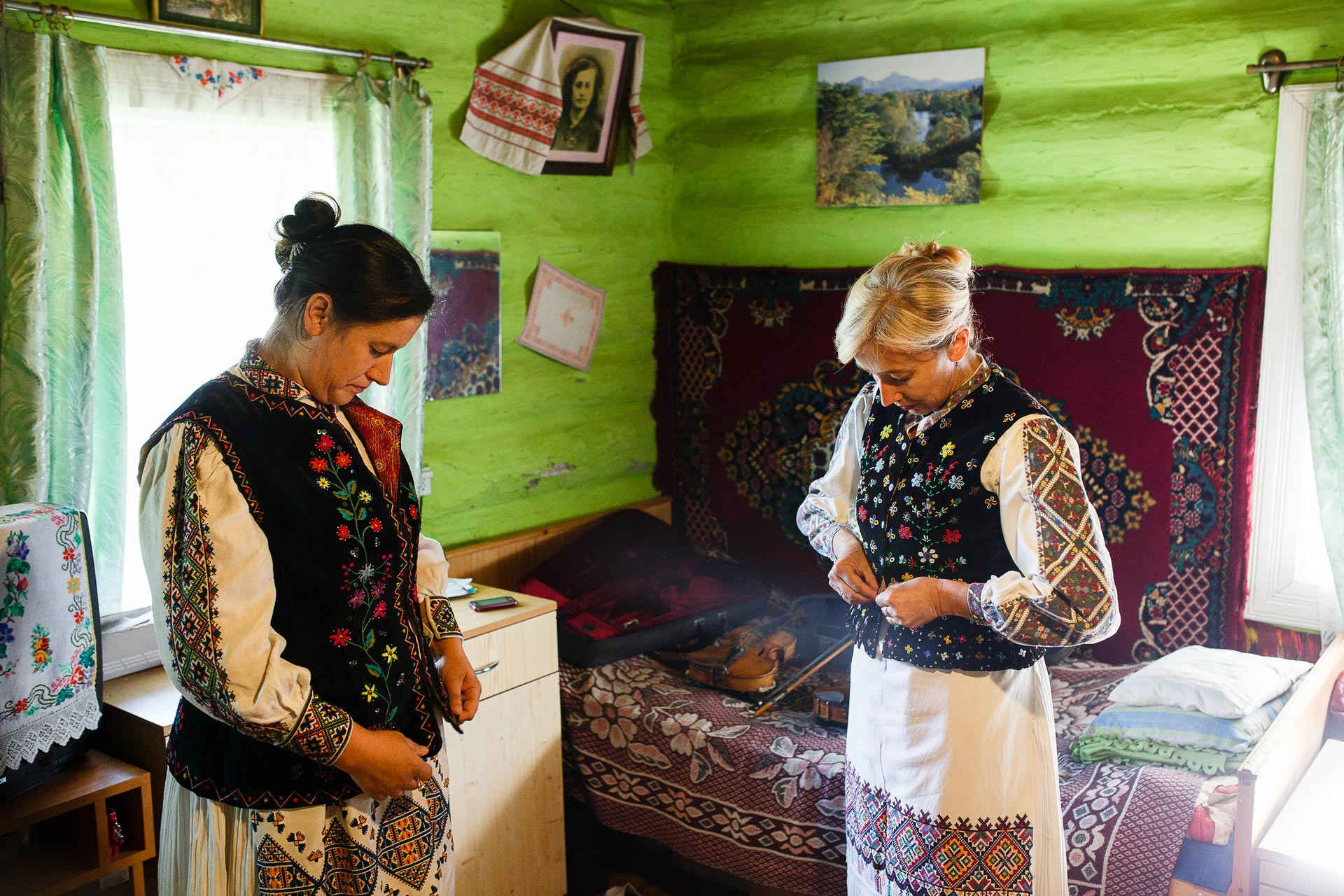
Boikos hold an ethnic festival called World Boiko Festivities that is a popular event with Boikos coming from all over the world. These festivities have been held in Turka Raion (an administrative unit in Ukraine) every five years since 1992, engaging folk and ethnographic bands of Ukrainian Boiko origin as well as Boiko expats. They play kolomyikas (kolomyika is a Hutsul music genre that combines a fast paced folk dance and comedic rhymed verses) and other traditional songs that are performed only in homeland.
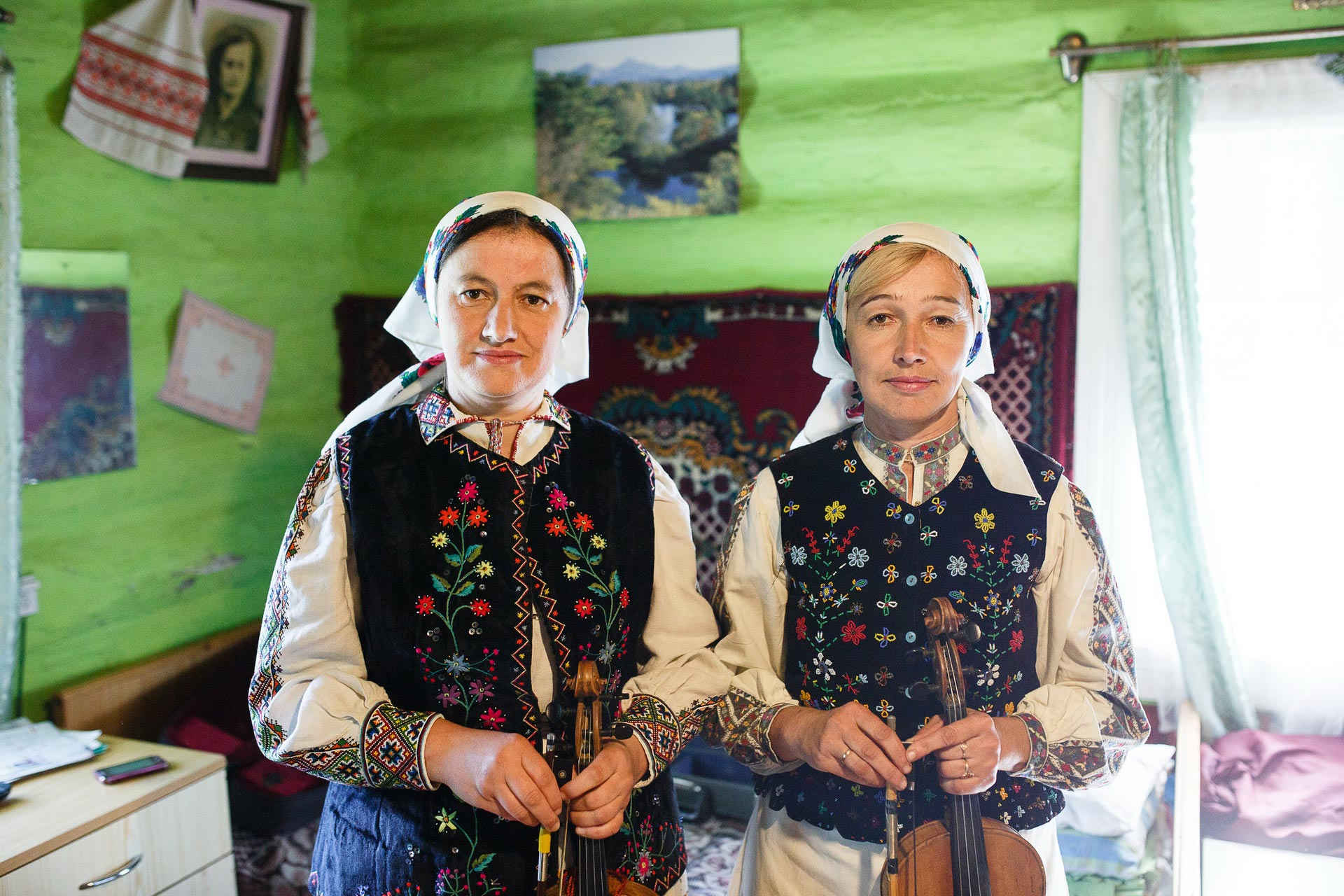
Ihnatysh Sisters
The village of Lybokhora has a population of over two thousand people, and not all of them know each other. As for the name of the village, there is a legend: the village used to be called Oleksanka, since Oleska, a well-off man who had been granted a letter of privilege by the king, which allowed him to occupy that territory, had founded it. However, there was another famous rich man. He had a daughter named Liuba who was admired by many men, even those from other villages. When she came down with a disease, all people were sharing the news, saying: “Liuba is ill! Liuba is ill!” (Ukrainian word for “ill” is “khvora”, so what people were saying sounded like “Luiba khvora! Luiba khvora!”). They say that as time went by, sound “u” changed to “y”, which explains the name “Lybokhora”.
The village of Lybokhora is home to the sisters Lesia and Vasylyna Ihnatysh, and both of them are violin players. They are indispensable members and managers of the trio folk ensemble “Beskyd”. This ensemble, founded by their father half a century ago, performs traditional Boiko songs at weddings and other festivities. The ensemble consists of seven or eight members who play ancient instruments. Besides violin, there are cymbals (a music instrument that generates sound when sticks hit strings — author), basolia (Ukrainian folk bow instrument that resembles violoncello — author), tambourine (a percussion instrument that looks like a band covered with a dry skin — author), jaw harp (а reed pluck instrument formed as a metal arc — author), reed pipe (a wind instrument — author).
“Father used to involve us in the participation in the ensemble since we were kids. Since the 1980s, we have been full-time members. Even though our father did not have a degree in music, he insisted that we should get one.”
Lesia’s sons are members of the ensemble as well. They can play jaw harp, cymbals, basolia, and tambourine. Both of them study music in Drohobych. The older son plays violin, and the younger one plays saxophone. They are musicians in fourth degree, thus making up a dynasty.
“Our father used to play violin at weddings. Even without the formal education, he was very skillful. Our grandfather Ivan Mykhailovych (patronymic name) Ihnatysh also was a well-known violin player of Boiko origin back at the time. There is no footage, and no evidence of him playing. We have never heard him play. There are records of our father’s playing, though.”
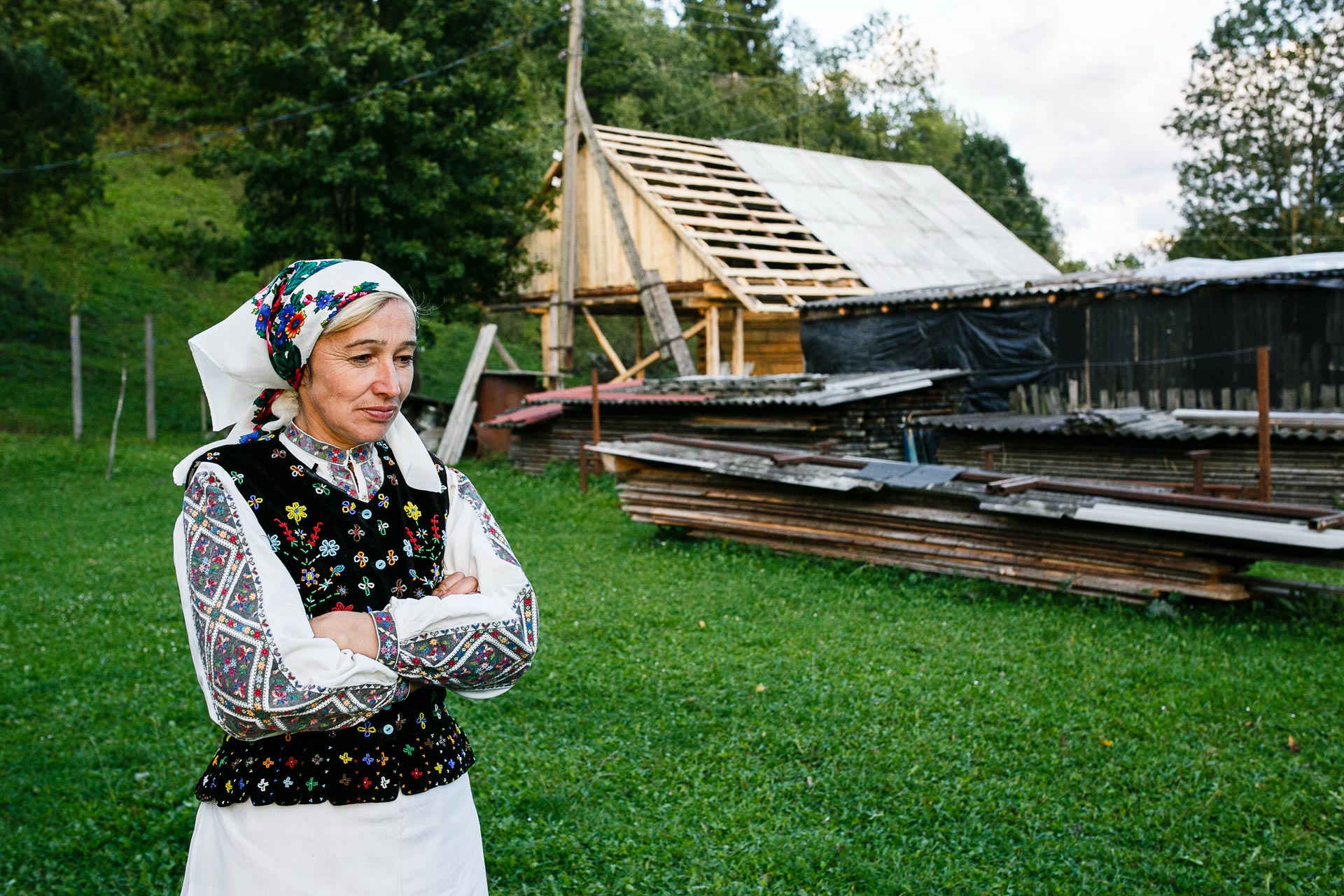
Vasylyna and Lesia claim being the youngest representatives of Boiko’s folklore. There are older women who bear this knowledge, but in most cases, this tradition is falling into decay.
“Young people do not strive towards it nowadays. Unlike them, we have been taught about it since our childhood. People from around neighborhood used to invite our father to weddings, and we would follow and listen him play. Now we play what we remember. We also used to shepherd cows, talking and singing as we did. Father would play the reed pipe and sing all these kolomyikas, and now we are grateful for that. He used to say, ‘It will come in handy someday. I won’t be around, and you have to remember it’.”
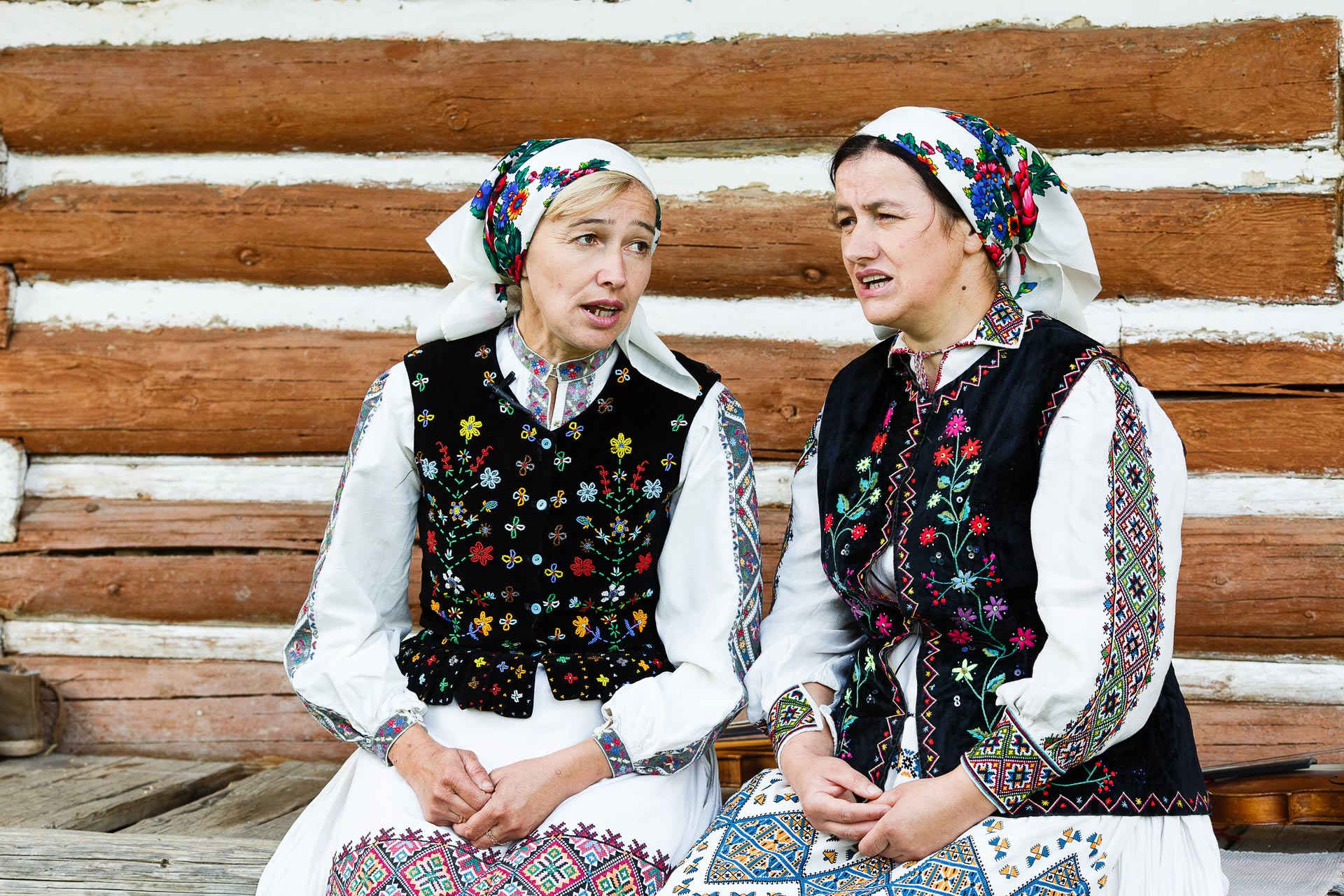
Sisters sang us a couple of ladkankas (ladkanka is a three-verse song where the first one is an introduction and the other two repeat themselves). Ladkankas commemorate different rituals, related to weddings, shepherds, harvest, or the beginning of a sowing season.
“Some wedding ladkankas are performed at the wedding beginning. Whenever the wedding started, elderly married women would commence the wedding celebration with these songs; among them, there were songs ‘to barvinok’, (barvinok is Ukrainian word for periwinkle. In this context barvinok means the whole range of Ukrainian wedding traditions, such as parents’ blessing, etc.), ‘to vinok’ (vinok is a Ukrainian word for wreath; in this context it means a bachelorette party) — there were ladkankas for each wedding stage.”
As the village of Lybokhora is amid the Carpathian mountains, no wonder that Lesia and Vasylyna opted for kolomyikas that are normally sung by cows’ or sheep’s shepherds on pololynas (polonyna is a valley). These songs are closely associated with people’s day-to-day life and observations.
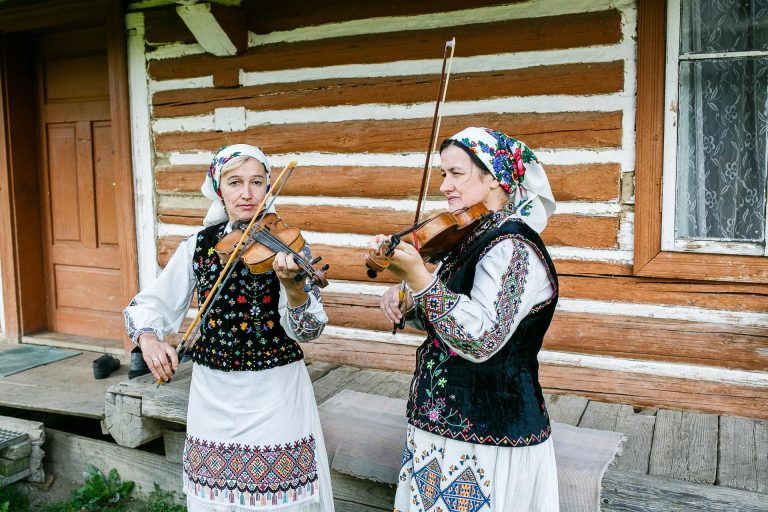
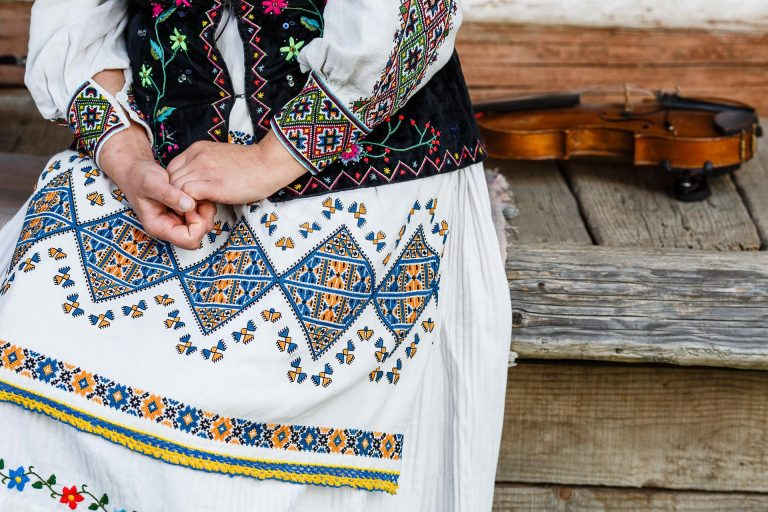
slideshow
Vivkania is another type of singing common in Boikivshchyna. To vivkaty literaly means to shout something.
“When adolescent boys and girls shepherded the cattle, they would call out from one mountaintop to another. Now you can take a cell phone and call, but back then, they had to call each other that way, in other words – to vivkaty. If a girl responded to such a call, it was believed that the feelings were mutual. The call was quite audible as it echoed back in the valley.”
See our story Hutsul Bread for the Carpathians” about the similar type of Hutsul singing.
There is comparatively little research of Boikivshchyna, according to what Vasylyna and Lesia have told us. However, scholars have various ideas as to where the Boiko came from.
“Some theories suggest that Boikos are Croats’ and Serbs’ descendants. As for the name itself, it is believed to have occurred due to the brisk nature of people. Another theory puts forward an idea that Boikos are called that way because they insert particles ‘bo, bo’ as fillers in conversation. We talk in such way even now. We mostly use our dialect.”
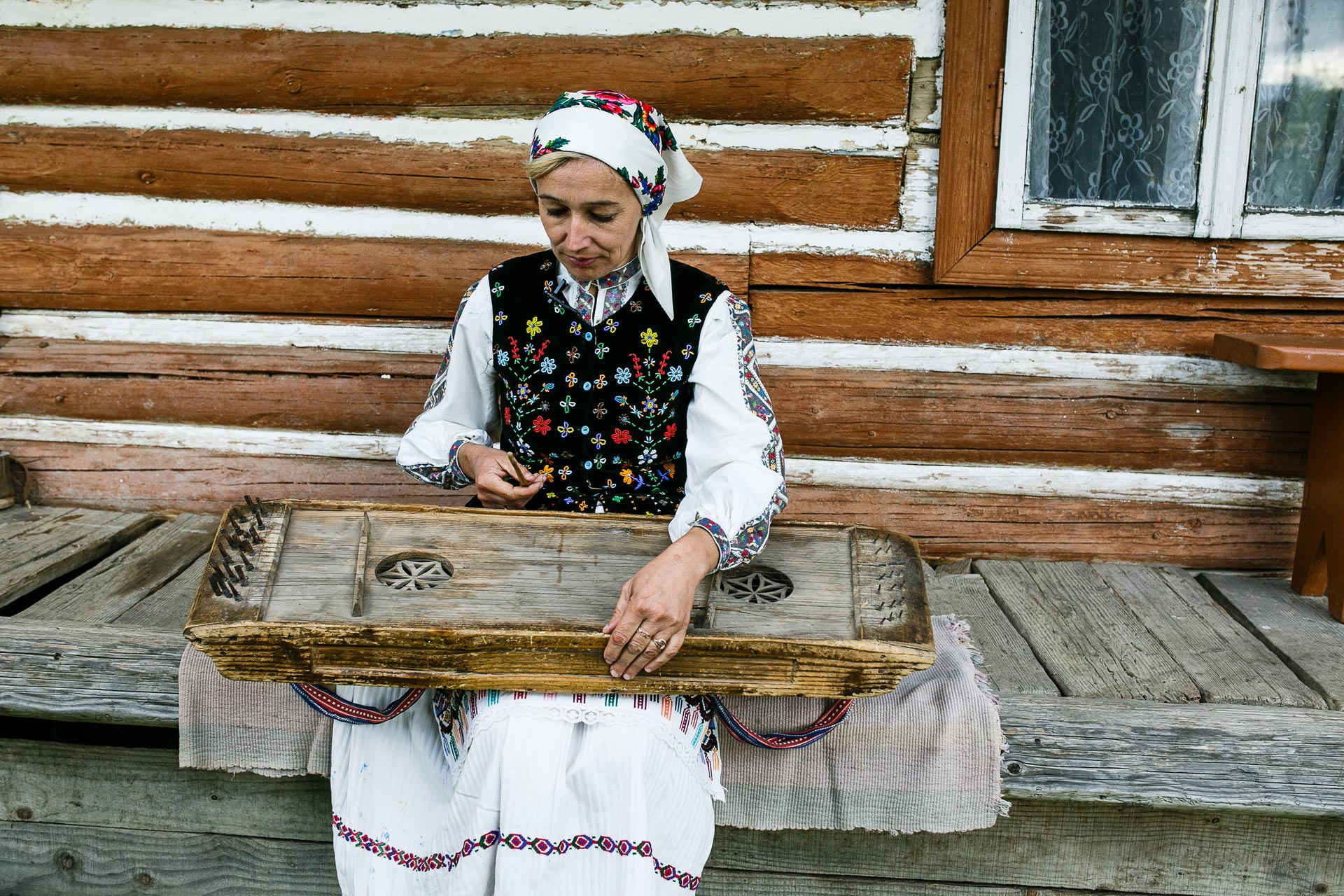
In formal setting, the Ihnatysh sisters speak standard language, but they encourage using the Boiko dialect to revive and preserve its unique nature. They gave an example of some typical Boikos’ expressions:
“There is an expression: ‘Yak bola, bola kobola, ta bola votiahnula’, which literally means ‘If there was a mare, it would pull’. Here is another example – a pot that is used for collecting blackberries is called ‘zbanók’ in other regions, but we call it ‘denérko’. The blackberry itself is called ‘yáfena’; meat broth is called ‘dziáma’. If you listen to Boikos’ conversation, you can hardly figure out what they are talking about.”
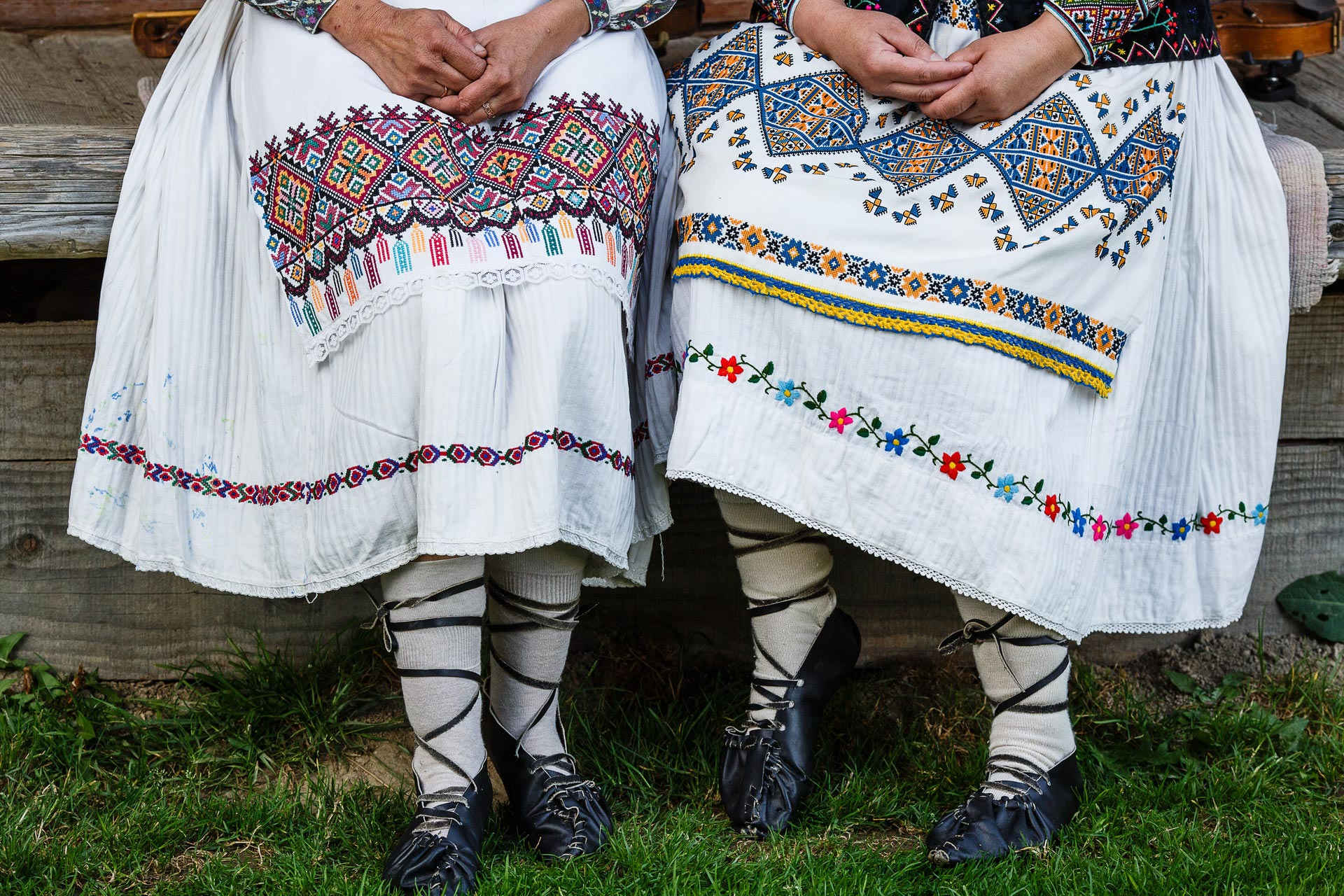
During Operation Vistula, Vasylyna and Lesia’s family was forced to move to Donetsk Oblast. As warfare approached their new home, they left.
“Our mother was exiled to Donetsk Oblast, but she did not like living there and returned to Boryslav. Our father was playing at weddings. This is how they met. She moved in with him to the mountains. People would laugh at her and ask, ‘Where are you going? Why do you want to live in the boondocks?’. I guess it was love that got her there. She never regretted her choice.”
Lesia and Vasylyna wear traditional Boikos’ ceremonial costumes. Boikos used to wear such costumes to church, while clothes that are more casual were used at home.
“This vest, called kamazélka, and these shirts were made in the Chorna village of Nyzhni-Ustryky Raion. This is where our mother came from. The skirts originate from Lybokhora. We have connected these two points of Boikivshchyna. Our shoes are called khodaký – a name typical of all Boiko Region. There were artisans making such shoes. A skirt was called fartúkh (fartuch in Ukrainian means apron), and the actual apron was called prýpynka or zapáska.”
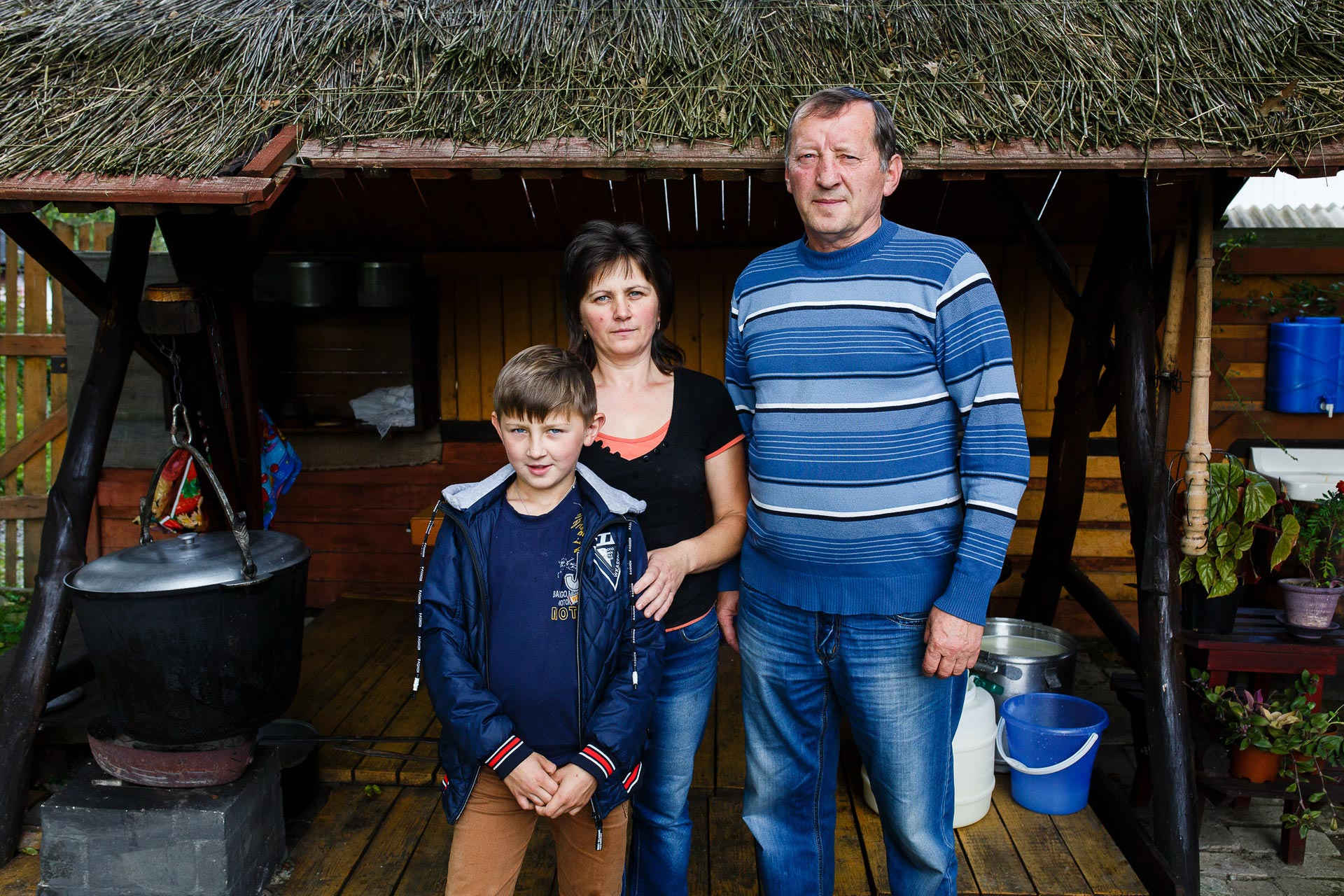
Komarnytskyi Family
The name of Borynia village derives from the word “bir” (pine tree wood). In the XVIII century, German colonists, who were dealing in various crafts and exported goods to Europe, occupied this land.
Bohdan Komarnytskyi is well versed in the history of his land. The first mentioning of the village dates back to the XVI century.
“Croats founded villages in place of already existing ones. They expanded settlement and gave their own names. The name of Borynia has remained the same, though. Kostiantyn Bahrianorodnyi, the Bizantine emperor and historian of the X century, notes that there was a settlement of white Serbs behind Turkey, meaning unbaptized Serbs living between Hungary and Croatian settlements. Boiko is the owner of cattle, just like American cowboy. According to one theory, Serbs are descendants of Croats, who gave name to Boikivshchyna.”
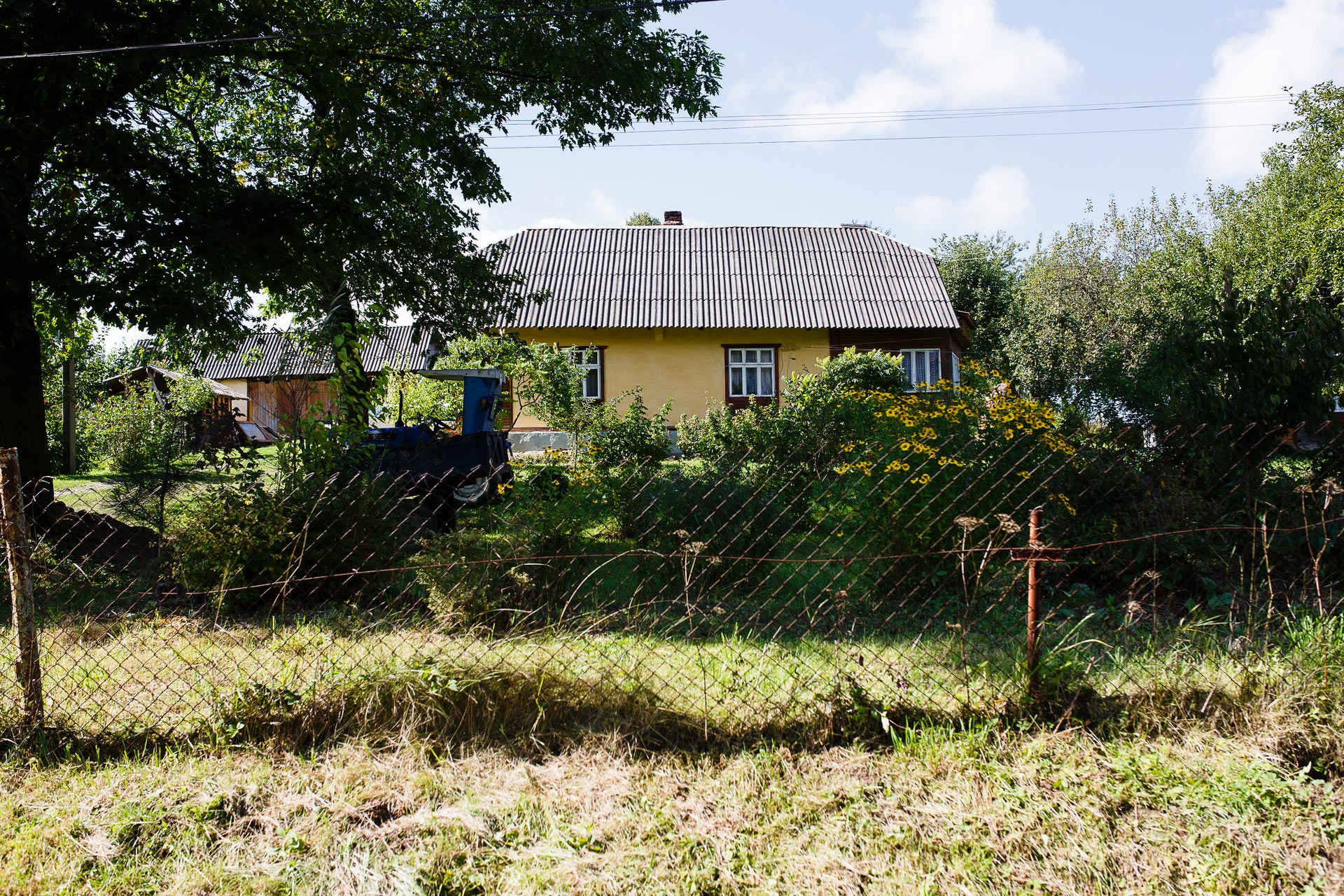
Bohdan’s parents come from the village of Komarnyky, 12 km away from Borynia. His origin is encoded in his last name — Komarnytskyi.
“There are some villages where all people have the same last names. In Yavoriv, a common last name is Yavornytskyi, in the village of Ilnyk – Ilnytskyi, etc. Each family name had its own flexion. Last name showed what tribe and family the person came from. However, it all was lost later. For instance, one would think that a person with a last name Boiko comes from Boikivshchyna. However, in time of Cossacks rule a person was given a nickname rather than name — just Boiko. He might have originated from another territory, but his name got lost, so he was called by a nickname.”
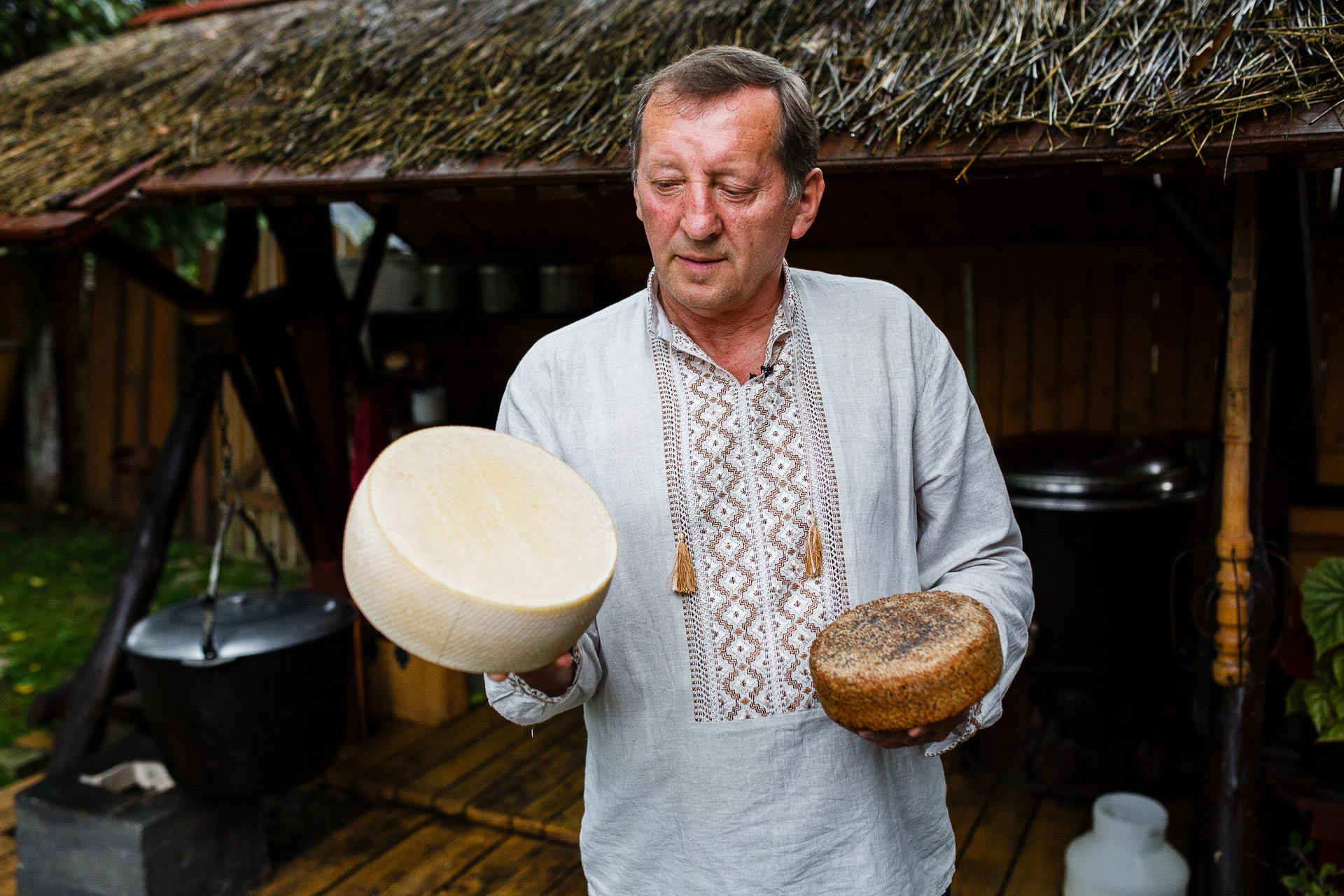
In Borynia village, the Komarnytskyi family revive an ancient tradition of making cheese and baking bread. Bohdan and his wife Natalia learned how to make “live” cheese from their colleagues in Zakarpattia, who had gained this experience in Switzerland. Bohdan claims that nature itself made him get involved in the food industry.
“When you are doing something authentic, it seems that some supernatural forces are helping you. I can see how my life is becoming better. The more I delve into the past, the more clearly I can see the future. For some reason, it is true. When the knowledge is passed from old generation to the new one, it results in a sustainable development.”
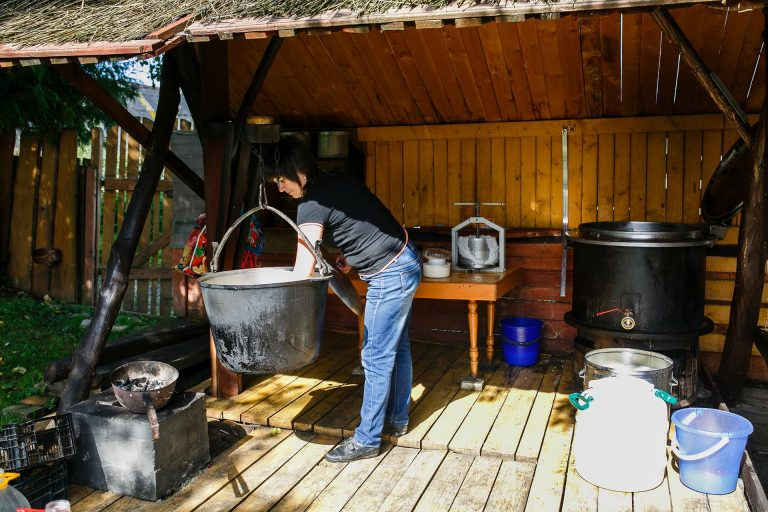
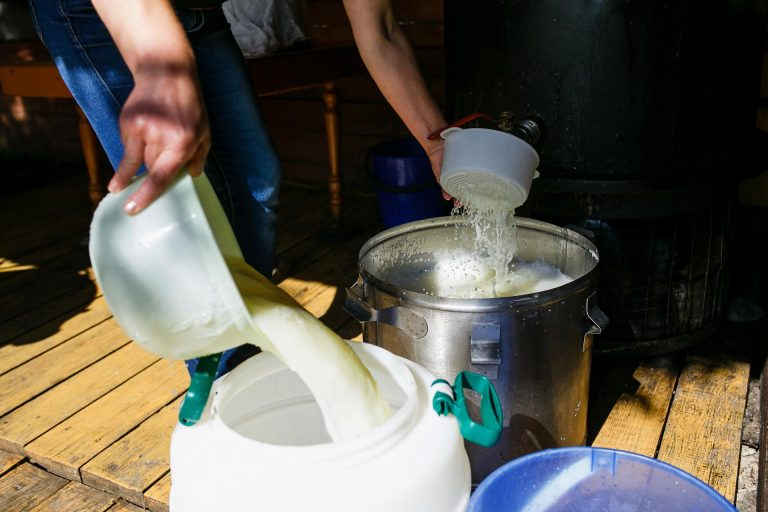
slideshow
To make cheese, the family of Komarnytskyi buy milk from four or five households. One kilogram of cheese requires 11-12 liters of milk.
“Natalia can tell what milk comes from a cow injected with antibiotics and which doesn’t. We abstain from such cows. The owners who mix milk with water do not even offer their product to me, because they know I will expose them.”
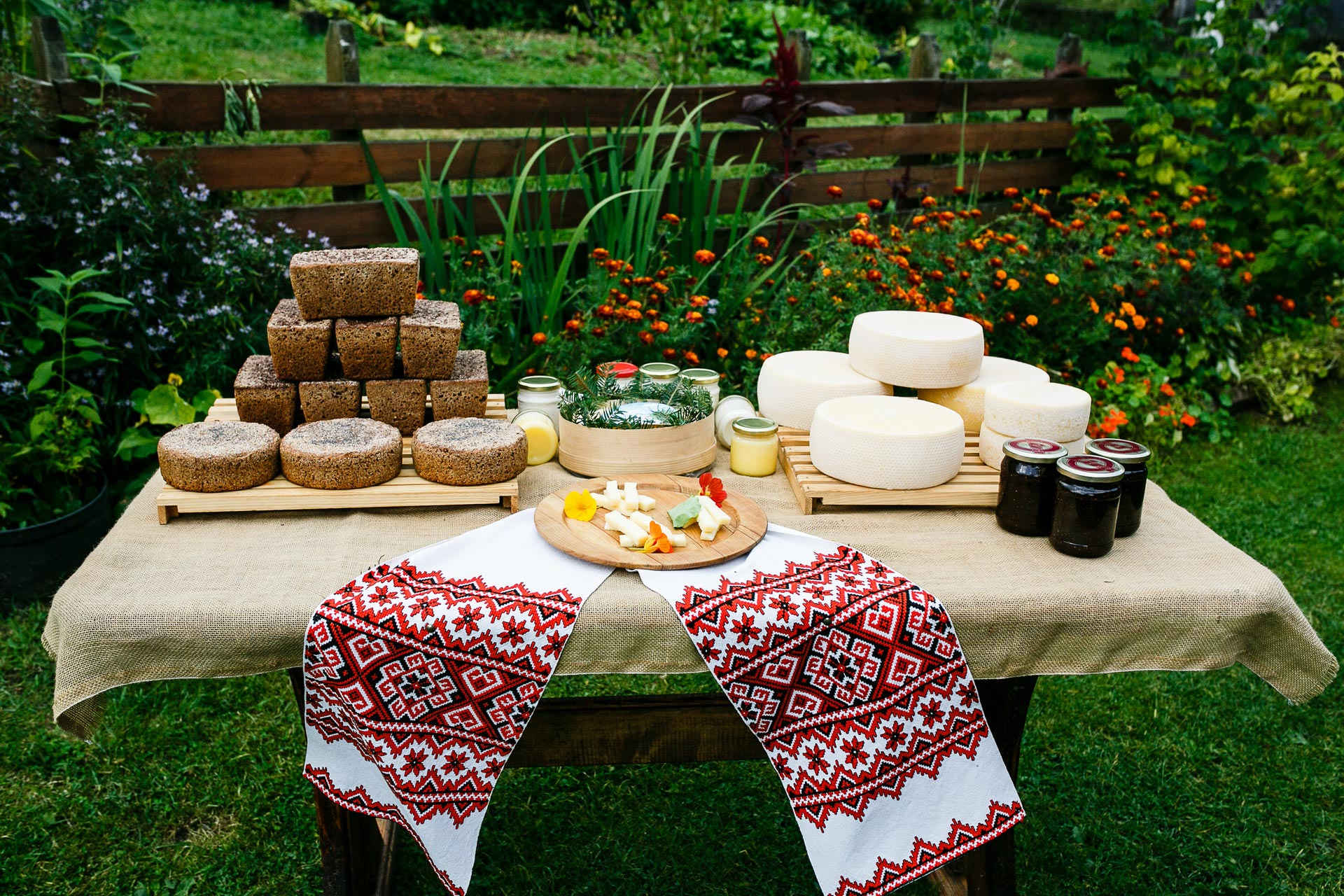
They deliver cheese by bus that travels to Lviv. Cheese is popular among tourists and is frequently ordered for different events, such as weddings, presentations, etc.
“This year, we had guests from Poland, the USA, and Italy. In addition, Ukrainians come from different cities – Kharkiv, Mariupol, Zaporizhia, Ternopil, Kyiv, etc. I have never encountered negative feedback.”
Bohdan shows non-yeasted coarse-grained bread baked by him and his wife. They use baking tins made of clay, which affects the taste.
“Flour that is sold in magazines lacks essential components, whereas coarse-grained flour has nutritious nucleus and seeds. The nucleus provides energy and seeds cleanse the body. Rye has always been a basis for bread, and wheat has been used as a supplement.”
They deliver cheese by bus that travels to Lviv. Cheese is popular among tourists and is frequently ordered for different events, such as weddings, presentations, etc.
“This year, we had guests from Poland, the USA, and Italy. In addition, Ukrainians come from different cities – Kharkiv, Mariupol, Zaporizhia, Ternopil, Kyiv, etc. I have never encountered negative feedback.”
Bohdan shows non-yeasted coarse-grained bread baked by him and his wife. They use baking tins made of clay, which affects the taste.
“Flour that is sold in magazines lacks essential components, whereas coarse-grained flour has nutritious nucleus and seeds. The nucleus provides energy and seeds cleanse the body. Rye has always been a basis for bread, and wheat has been used as a supplement.”
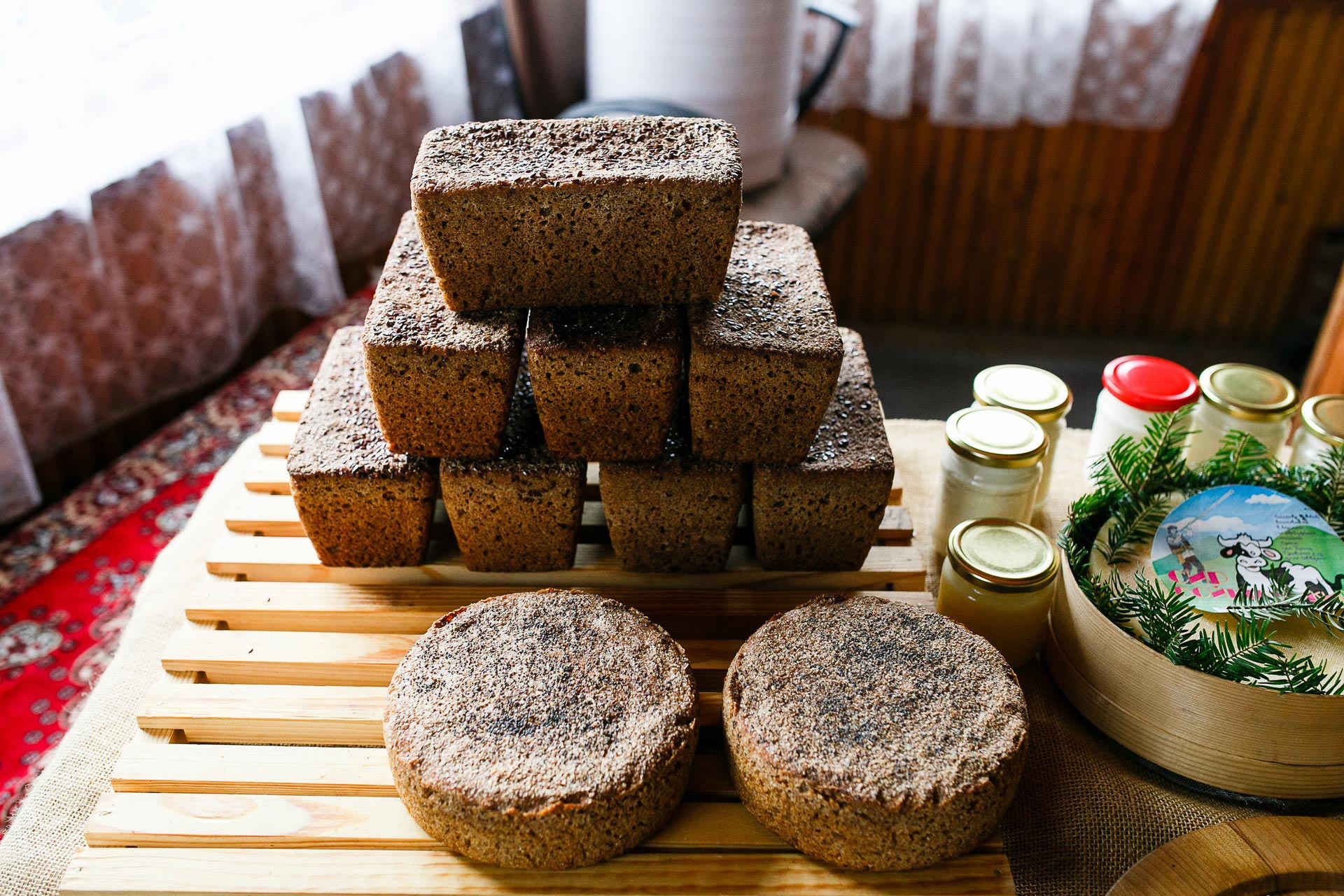
Bohdan and Natalia bake comparatively small amount of bread, up to 50 loaves per week. They sell bread to some customers and deliver it in bulk to Stryi.
“Comparing to the prices for such bread in Kyiv, we sell it considerably cheaper. I buy grain from the farmer who grows it for us. I sowed rye and wheat here – the harvest is excellent.”
“When you are doing something authentic – the things our ancestors did, you feel empowered. Life gets better, and everything works out the way it should.”
Bohdan tells that it took some time for other villagers to accept his new passion. At first, they laughed at him, but then understood why Komarnytskyi family had gone this way.
“It cannot happen overnight. This is a long process. People are used to standards, everything has to be within norms, but it hit me that revival is the only right way, be it food or other products. Sometimes they accuse me of dragging them backwards, while the rest of the world is moving forward. I am not saying that we should refuse from the modern accomplishments, but if there is a century old tradition of cheese making, why don’t we take advantage of it? We may use up-to-date tools, but follow the old procedure.”
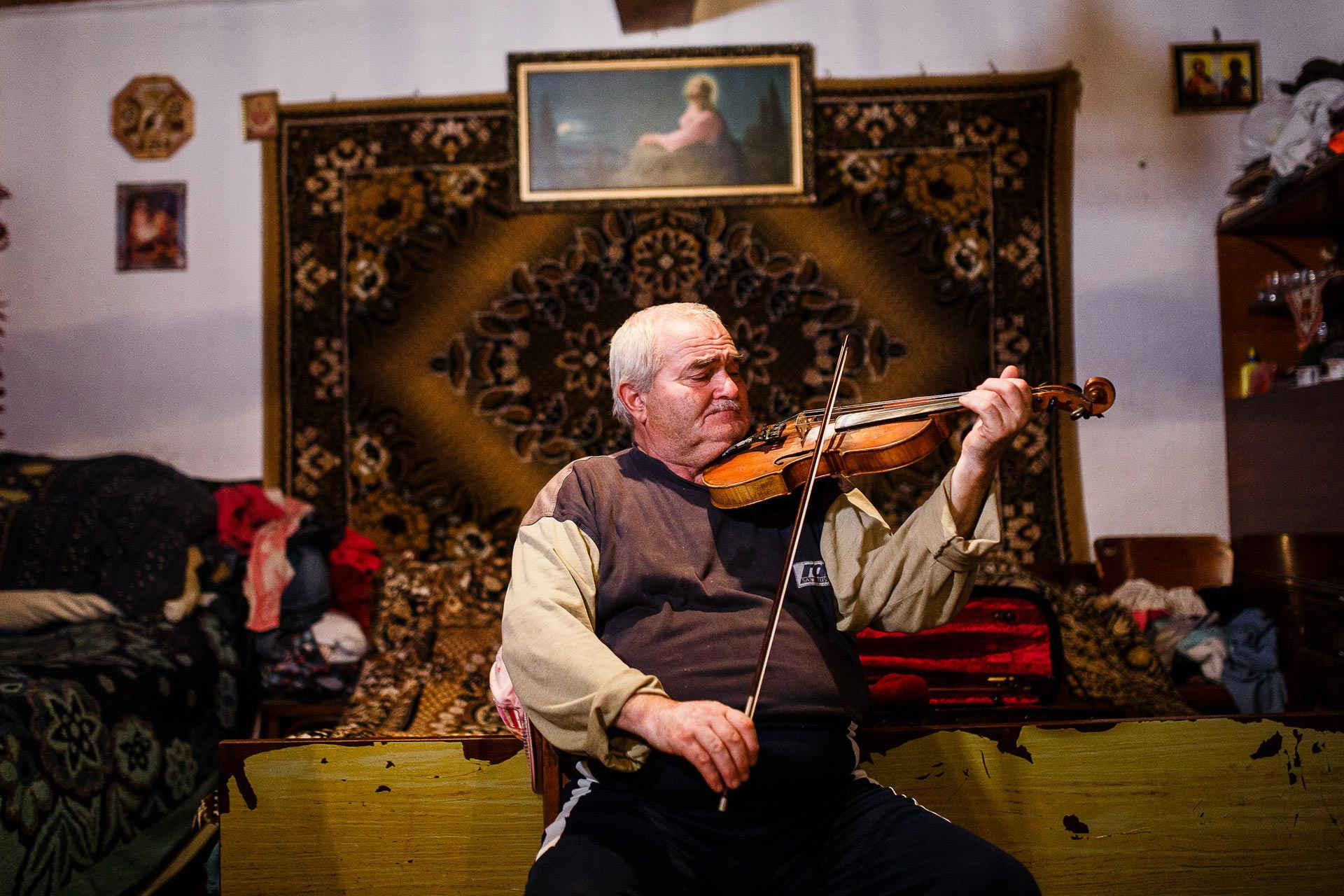
Anatolii
Anatolii Vysochanskyi has dedicated 19 years of his life to tourist business. He worked as a tour guide, traveled the mountains, paved hiking routes and told tourists about the Boiko land.
“I hiked with people from Kyiv and CIS states. When I was still young, we would sleep at crossovers and camps and then keep walking. After tourism, I started working in the comprehensive school where I worked for 42 years.”
Anatolii Vysochanskyi was born in the village of Mokhnate in Turka Raion, where he has been living with his wife ever since. He and his wife have four children. Anatolii’s son assists him with playing traditional Boiko’s music at weddings.
“I am in charge of the Vidlunnia Karpat (‘Carpathian Echo’) band. At weddings, we play ceremonial songs of Verkhovyna, Boikivshchyna, Hutsulshchyna. We play at concerts and gigs or at whatever the customer wants. We return to folklore, because it is falling into decay, and no one is perpetuating old traditions and customs. If we let it disappear, it means we are worth nothing.”
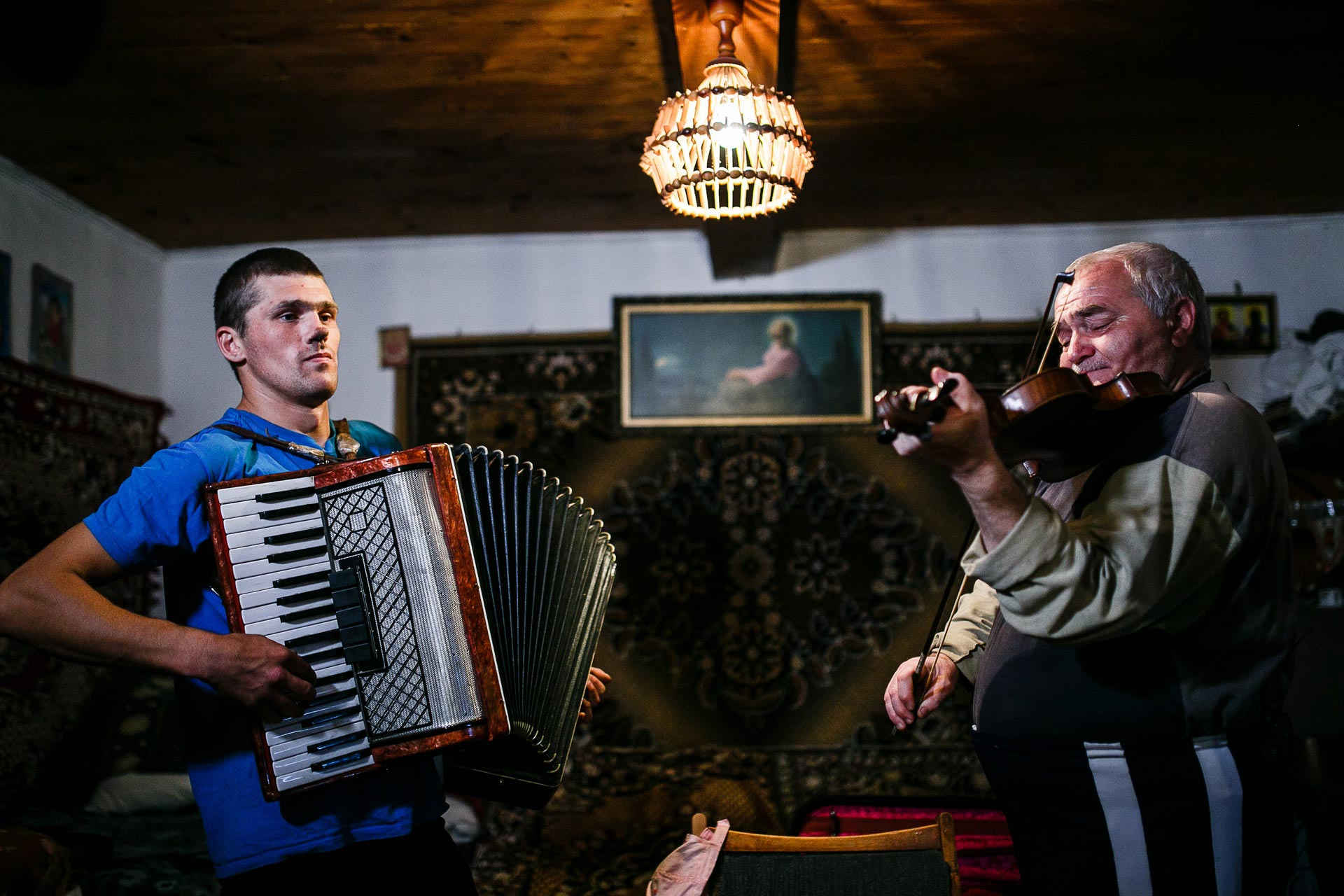
To play at weddings, one had to know quite a few rituals, taking into account peculiarities that are different in each region. Anatolii played in different places. He has been in a place extremely high in the mountains, which is inaccessible even if you are traveling on a horse cart.
“We perform Boikos’ kolomyikas when a groom approaches a bride. When they walk by a window, the musicians play a special music for blessing. There are also ladkas — songs played to ask blessing for a groom or a bride. First, father gives his blessing, and then mother gives hers with bread and salt, wreath and korovai (traditional wedding bread). This is Boikos’ tradition.”
Anatolii Vysochanskyi learned to play when he was six years old. When he turned eight, he started playing accordion at weddings with grown-up musicians.
“Even though I learned on my own, I played well. I can read music a little but mostly play everything by ear. Playing is my thing.”
Anatolii says there are still villages in Boikivshchyna where people celebrate traditional weddings:
“A bride wears embroidered clothes and puts a bonnet on her head. Here in Turkivshchyna, we celebrate Boiko weddings. A host and a matchmaker must know of all rituals, as each region has its own peculiarities. For instance, in Boikivshchyna, we have a different ritual of taking bridal veil off, followed by a ‘golden dance’, where everyone who wants to dance with the bride should give her money.”
Anatolii Vysochanskyi works in a comprehensive school and in a nursery. He teaches singing and music.
“In nursery, I have junior and senior groups. I have classes twice a week. I played accordion for them, and they took fancy to it. One can teach these kids more in pre-school. I am also observing my son. When he was still small, we went to a church on Easter. When we came back home he said, ‘Dad, it is time to eat, but I’d rather you played me a song’. Do you get it? He preferred music to food. It is great. It means he will grow to be a decent man.”
Anatolii thinks that Boikos can be described as very kind people. As history shows, they have never been prosperous, as it is rather cold to grow vine or other crops on this land.
“Boikos have always been involved in cattle farming and agronomy. They relied heavily on soil. Nowadays, however, no one sows wheat here. Mountainous area is not suitable for that. In cattle farming, however, we are the top notch. It is easy here with plenty of uncultivated land. You can mow as much hay as you want and feed as many as 100 animals. It is typical of Boiko to have fun, sing and fool around with his wife, when he is not hungry, everything is well and the harvest is plentiful. In this case, he can have a little booze and dance with his wife like crazy.”
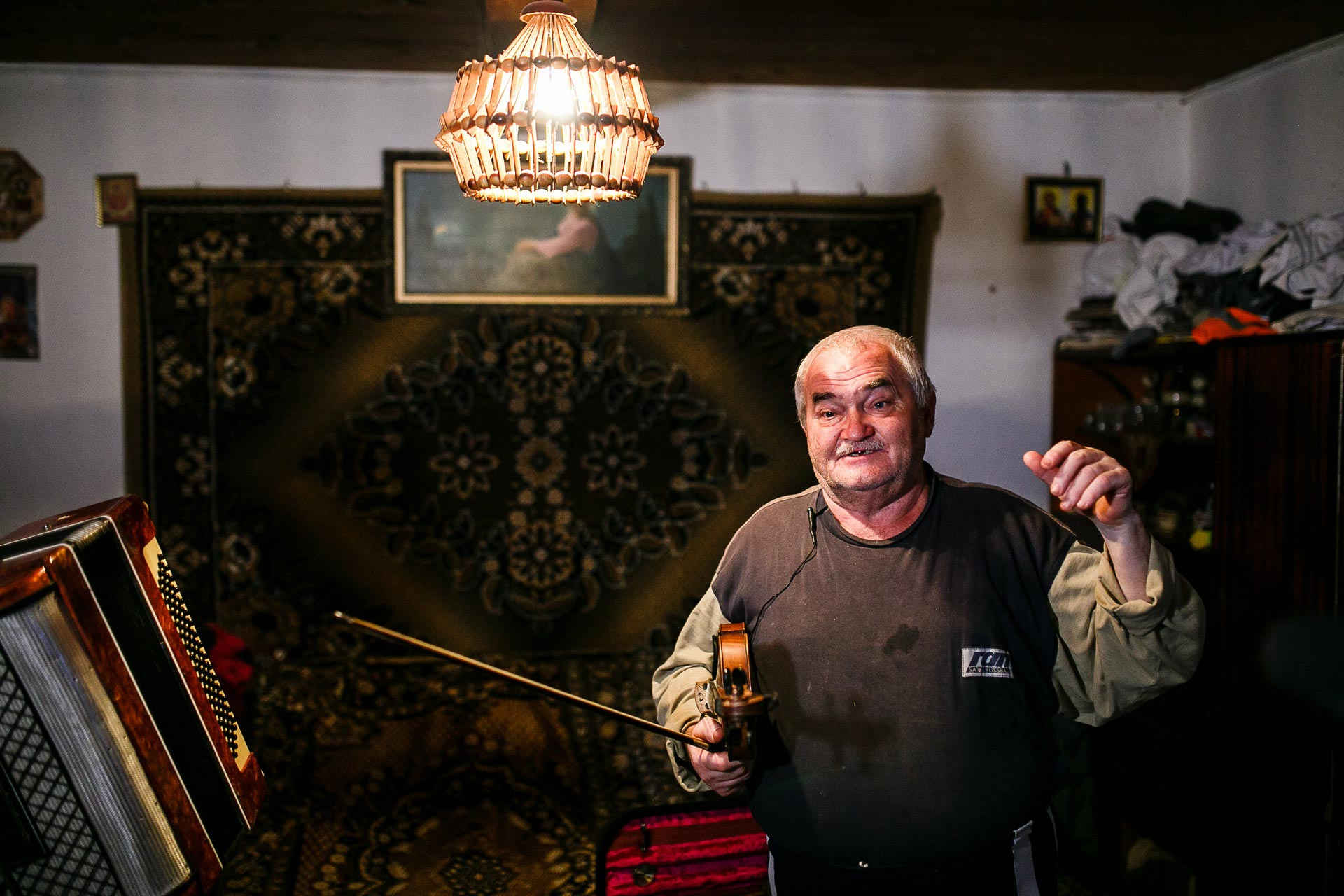
Considering that there used to be fewer entertainment options, there were musicians that are more talented. Every musician had a violin and could play in his own way.
“Now there is a violin in every house. You can buy it for only 100 rubles, but no one wants to play. In order to play music, one needs to feel it. Neither parents nor money can help with it – a child must make an effort. There is nothing parents can do if their child goes on the stage and is standing still. One has to be charismatic and know how to entertain people. You can’t buy this skill.”
Anatolii Vysochanskyi has played at more than fifteen hundred weddings. Now people do not throw huge parties for celebration, but back then, they would celebrate through the night.
“We played a lot. At first, it was troista music (traditional Hutsul music) and then we started playing vocal-instrument songs. We perform live music and never use prerecorded tapes. We have our playlist. My kiddo knows about 2.5 thousand songs by heart. I play only folklore: Boikos’ folklore, Hutsuls’ folklore, czardas (Hungarian dance), etc. Young guys also play popular songs that are broadcasted in Ukrainian.”
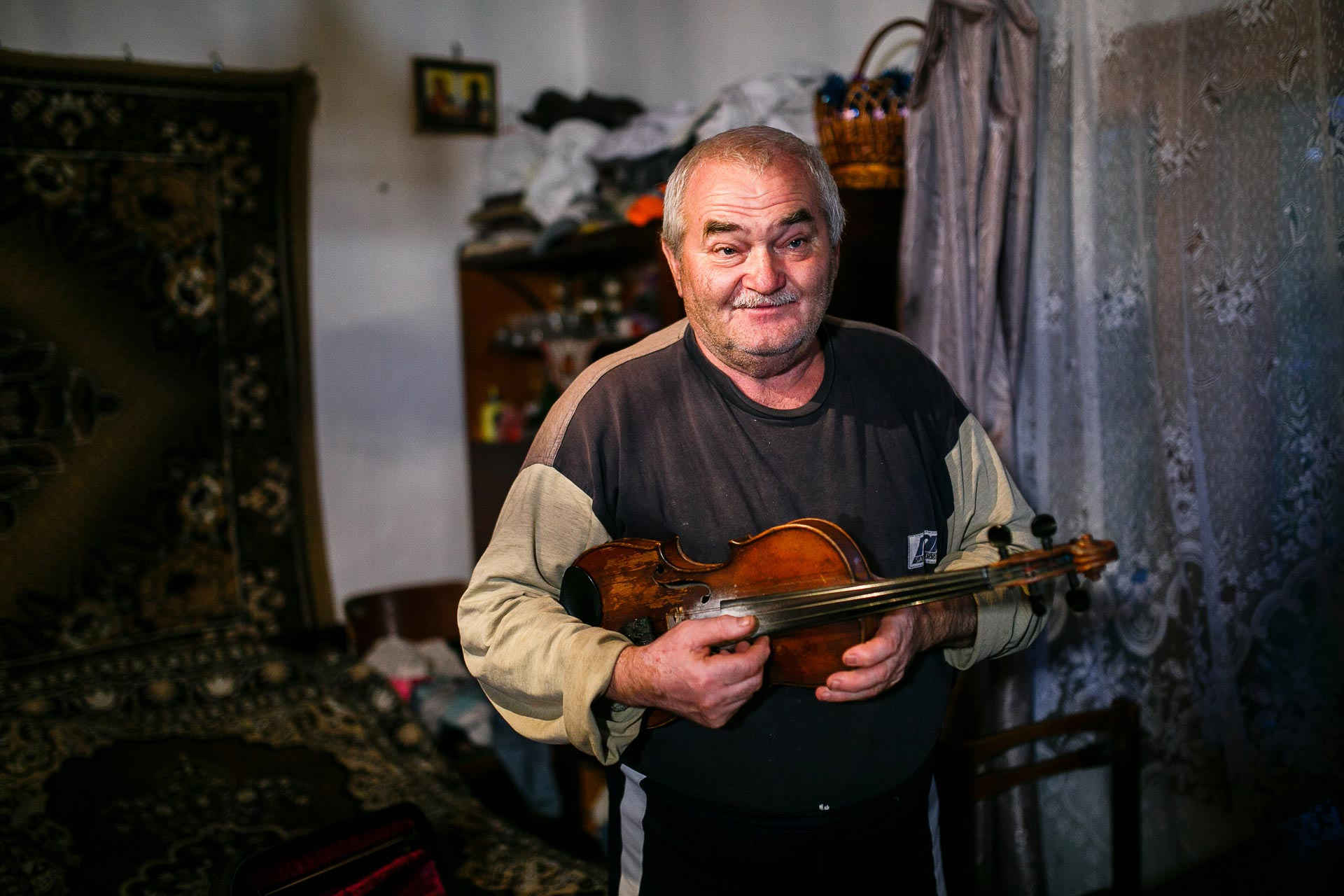
Considering that there used to be fewer entertainment options, there were musicians that are more talented. Every musician had a violin and could play in his own way.
“Now there is a violin in every house. You can buy it for only 100 rubles, but no one wants to play. In order to play music, one needs to feel it. Neither parents nor money can help with it – a child must make an effort. There is nothing parents can do if their child goes on the stage and is standing still. One has to be charismatic and know how to entertain people. You can’t buy this skill.”
Anatolii Vysochanskyi has played at more than fifteen hundred weddings. Now people do not throw huge parties for celebration, but back then, they would celebrate through the night.
“We played a lot. At first, it was troista music (traditional Hutsul music) and then we started playing vocal-instrument songs. We perform live music and never use prerecorded tapes. We have our playlist. My kiddo knows about 2.5 thousand songs by heart. I play only folklore: Boikos’ folklore, Hutsuls’ folklore, czardas (Hungarian dance), etc. Young guys also play popular songs that are broadcasted in Ukrainian.”
How was shooting done
Watch the video blog to see how we traveled across the Ukrainian Carpathians and how Boikos treated us in different villages of Boikivshchyna. Watch to learn more about music, cheese making, bread baking and traditional singing.

